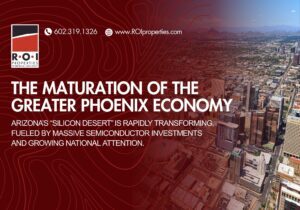Of all the businesses affected by the coronavirus, restaurants in Greater Phoenix and throughout Arizona have been among the hardest hit. Our customary spring tourist season vanished without a trace, and the stay-at-home orders in mid-March limited restaurants to takeout, delivery or drive-thru service only. While some were able to make the best of a bad situation, many others could not—often for reasons beyond their control. In recent weeks, several high-profile Phoenix restaurants have announced they have closed permanently, including Barrio Cafe Gran Reserva, Caveman Burgers, and Lilac Bakery in Phoenix, and Mark’s Café in Tempe. Equally disheartening, many lesser-known restaurants fall into 20 to 25% of small businesses that Phoenix’s Economic Development Department recently projected will not survive the COVID 19 crisis.
Even with the loosening of restrictions to again allow dine-in service as of May 11, it is not just a snap of the fingers to get back up and running. Supplies need to be bought, servers need to be hired or rehired, and already-strict hygiene procedures need to be ramped up to meet new guidelines. For many restaurants, just the simple math of accommodating social distancing with dramatically reduced numbers of patrons may not pencil out, leaving them waiting for an unknown full-opening date.
What Comes Next for Phoenix Restaurants and Real Estate?
From a commercial real estate perspective, Phoenix was arguably saturated or even overbuilt in restaurants. Indeed, it was identifiable as a risk area before the COVID-19 pandemic and would have been negatively by a future recession. In many cases, either a marginal concept or an abundance of nearby competition made these businesses already tenuous.
Looking forward, the question becomes: “How many shuttered restaurants will there be, what happens to those vacated restaurant spaces, and how might it affect commercial real estate as a whole?” Interestingly enough, many of the same qualities that make properties attractive for restaurants make them attractive in general. These are factors such as good visibility, easy access, and locations in highly populated areas with solid demographics. As a result, we are already seeing some of these properties put to alternatives uses, such as neighborhood-oriented medical services or clinics. While the locations and demographics are the major positives, it can be expensive to convert and improve restaurant properties for a new commercial real estate purpose.
While the larger restaurant chains and brands may be better capitalized overall, the surviving local restaurants may have one advantage: the community’s desire to support their neighborhood businesses, particularly as we emerge from the crisis and attempt to reenergize the economy. This effect will likely be strongest for restaurants in signature neighborhoods in the Valley.
The Phoenix commercial real estate market is tricky right now, and that is particularly true for buying, selling, or leasing restaurant properties. To put an expert advocate on your side, contact R.O.I. Properties at 602-319-1326.










